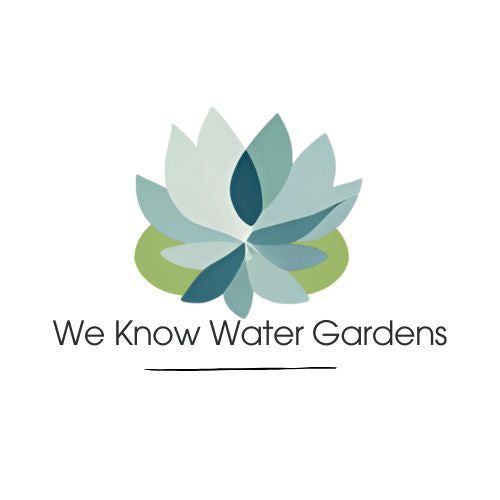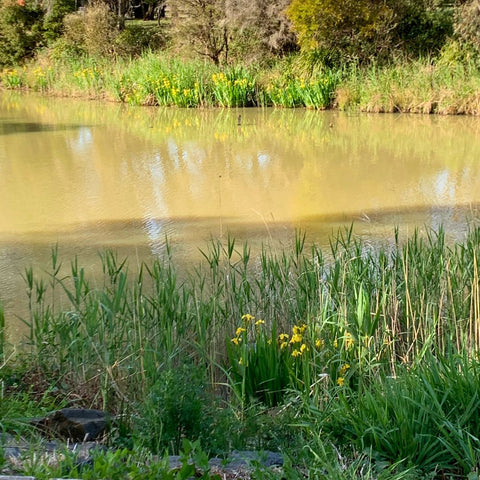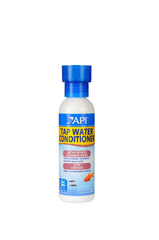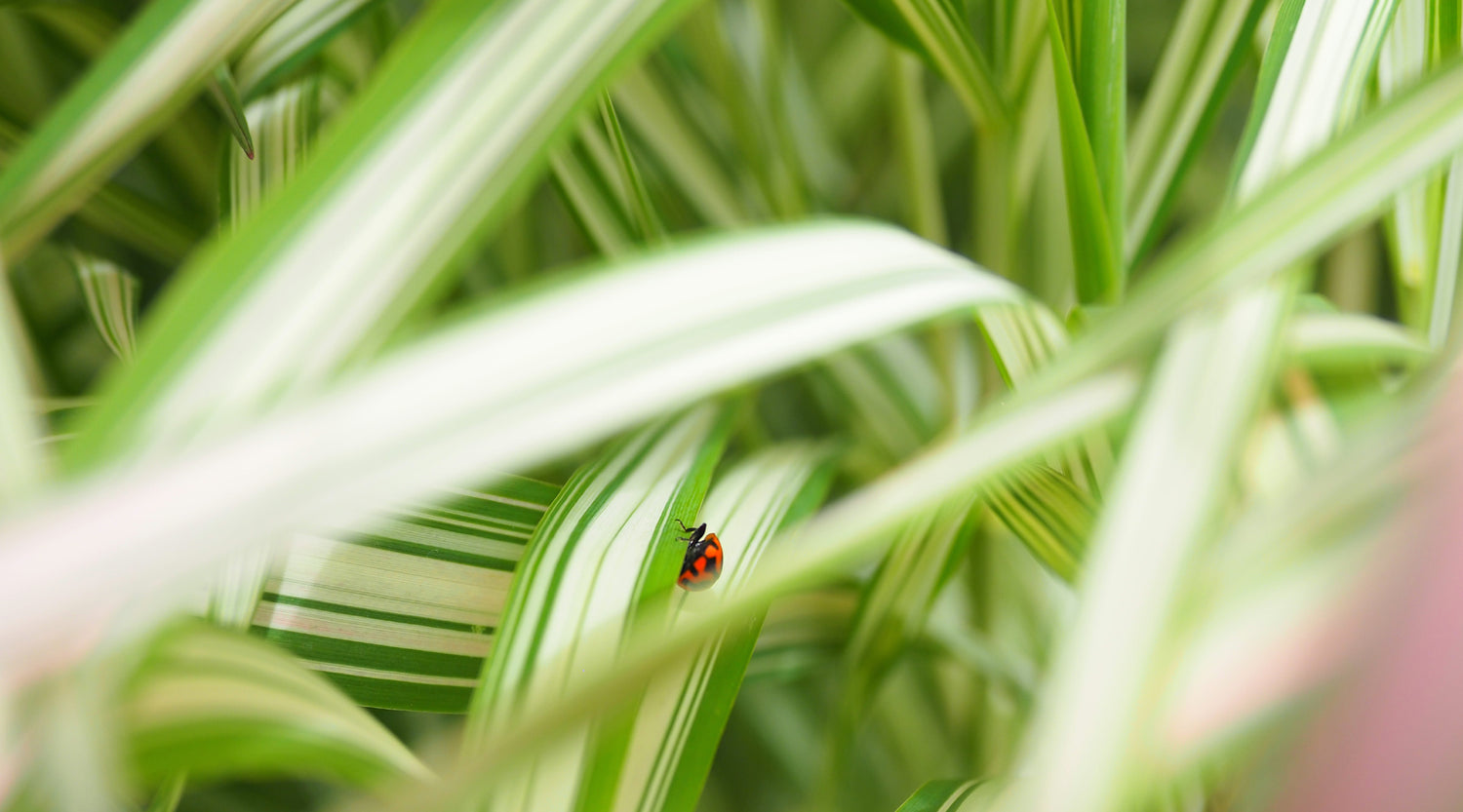Home
>
We Know Water Gardens Blog
>
From Droughts to Damages: Exploring the Common Culprits Behind Pond Water Loss
From Droughts to Damages: Exploring the Common Culprits Behind Pond Water Loss
on Nov 07, 2023
Why is my pond losing so much water?
When it comes to pond water loss, identifying the common culprits is essential for maintaining the balance of nature. In Australia, with a climate that faces droughts and high temperatures, these factors can contribute to this issue and disrupt the delicate ecosystem within a pond. In this article, we will explore these common culprits and delve into the consequences they can have on the overall health of a pond.
Droughts are a primary cause of pond water loss, as the lack of rainfall and excessive heat lead to evaporation and decreased water levels. Additionally, damages to pond infrastructure, such as leaks or leaks in a dam wall, can result in significant water loss over time. Understanding how these events can occur and learning how to prevent or mitigate their effects is crucial for pond owners and managers.
By identifying the common culprits behind pond water loss, we can take proactive measures to prevent further damage and ensure the long-term viability of our ponds. Join us as we unravel the mysteries behind water loss and discover practical solutions to protect our precious aquatic ecosystems.
Common causes of pond water loss
When it comes to pond water loss, identifying the common culprits is essential for maintaining the balance of nature. From evaporation to leaks in pond liners, various factors can contribute to this issue and disrupt the delicate ecosystem within a pond. In this article, we will explore these common culprits and delve into the consequences they can have on the overall health of a pond. By identifying the common culprits behind pond water loss, we can take proactive measures to prevent further damage and ensure the long-term viability of our ponds. Join us as we unravel the mysteries behind water loss and discover practical solutions to protect our precious aquatic ecosystems.
Ponds are susceptible to various factors that can lead to water loss. Understanding these causes is crucial for pond owners and managers to effectively address and prevent further damage. Let's explore the most common culprits behind pond water loss:
Evaporation: The Role of Heat and Sun Exposure
Evaporation is a natural process that occurs when water is exposed to heat and sunlight. Ponds, especially those in arid regions or during droughts, are particularly vulnerable to excessive evaporation. The combination of high temperatures and prolonged sun exposure can lead to significant water loss over time. To mitigate this, pond owners can consider implementing certain measures such as shade structures or floating vegetation to provide shade and reduce water surface exposure. Additionally, reducing the overall surface area of the pond through strategic design can also help reduce evaporation rates.
The role drought and climate plays in Australia can make things challenging for Aussie water gardens. We recommend planting floating pond plants to act as a cover that will assist with evaporation, keeping a check on algae outbreaks and keeping a check of the water quality. Problems arising from these things can account for water loss in your pond.
Leaks and Structural Damage: Identifying and Repairing Issues
Damages to pond infrastructure, such as leaks or breaches in the dam, can result in substantial water loss. These damages can occur due to various reasons, including natural wear and tear, animal burrowing such as a wombat or rabbits if living on a rural property, or even improper construction. Identifying and repairing these issues promptly is crucial to prevent further water loss and potential structural instability. Regular inspections and maintenance should be conducted to identify any signs of leakage or structural damage. Repairing these issues may involve sealing cracks, reinforcing the dam, or even reconstructing the pond if necessary.
When it comes to pond that are prefabricated plastic molds, these are unlikely to develop leaks through structural tears or breakdown of the pond wall. These types of ponds are normally so strong and are UV stabilised. Often the culprit for water loss here could be a filtration pipe that has moved close to the pond edge or uneven installation of the pond. The water will always run off from the lowest part of the pond if it was not installed to be plum in your garden.
Ensure that your pre filter sponges and any mechanical type of filtration system is maintained and cleaned of any build up on a regular basis.
Plant and Algae Growth: Balancing Ecosystem Health
 While aquatic plants and algae are essential for maintaining a healthy pond ecosystem, excessive growth can contribute to water loss. Dense vegetation can obstruct water flow, leading to stagnant areas that are prone to water loss through evaporation. Additionally, some invasive plant species can rapidly consume water and outcompete other aquatic life. While floating plants can provide cover and in fact, help prevent evaporation, the key here is to strike a balance between ecosystem health and water conservation. Remember that our unique floating pond plant rings can turn any spreading pond plant into a
While aquatic plants and algae are essential for maintaining a healthy pond ecosystem, excessive growth can contribute to water loss. Dense vegetation can obstruct water flow, leading to stagnant areas that are prone to water loss through evaporation. Additionally, some invasive plant species can rapidly consume water and outcompete other aquatic life. While floating plants can provide cover and in fact, help prevent evaporation, the key here is to strike a balance between ecosystem health and water conservation. Remember that our unique floating pond plant rings can turn any spreading pond plant into a floating pond cover in no time at all!
floating pond cover in no time at all!
Regular maintenance, such as removing excess vegetation and implementing biological controls, can help control growth and ensure optimal water levels.
Water Quality Issues: Understanding Chemical Imbalances
Water quality issues, such as excessive nutrient levels or pH imbalances, can indirectly contribute to water loss by affecting the overall health of the pond ecosystem. Excessive nutrient levels can lead to excessive plant and algae growth, impacting water flow and increasing evaporation rates. pH imbalances can also affect the viability of aquatic life, leading to disruptions in the ecosystem's balance. Regular water quality testing and appropriate corrective actions, such as nutrient management or pH adjustment, are essential to maintain a healthy pond and prevent water loss.
Leaks and structural damage: Identifying and repairing issues
Preventing pond water loss begins with regular maintenance and proactive measures. Here are some practical steps pond owners and managers can take to reduce water loss:
1. Regular inspections: Conduct routine inspections to identify any signs of leaks, structural damage, or excessive vegetation growth. Early detection allows for prompt repairs and interventions.
2. Proper vegetation management: Implement strategies to control plant and algae growth, such as regular removal of excess vegetation, strategic planting of beneficial species, and using biological controls when necessary.
3. Water conservation practices: Implement water conservation practices, such as capturing and reusing rainwater or implementing water-saving technologies, to supplement natural water sources.
Plant and algae growth: Balancing ecosystem health
In cases where pond water levels have significantly dropped, restoring water levels becomes crucial to maintain the ecosystem's health. Several methods can be employed to replenish water levels:
1. Rainwater harvesting: Capture and store rainwater for later use in replenishing pond water levels during times of low rainfall.
2. Groundwater recharge: Implement groundwater recharge techniques, such as using infiltration basins or artificial recharge wells, to replenish water levels from underground sources.
3. Water transfer: If available, consider transferring water from nearby water sources to replenish the pond. However, careful consideration should be given to potential ecological impacts and water availability.
4. Water conservation during replenishment: When replenishing water levels, ensure minimal water loss by managing evaporation through shading, reducing exposure, or using temporary covers.
Water quality issues: Understanding chemical imbalances
One of the primary causes of pond water loss is the impact of wildlife and pests. Many species of wildlife, including birds, fish, and amphibians, rely on ponds for their survival. However, these animals can also have a significant impact on pond water levels. Conversely, an overpopulation of fish can lead to an increase in waste, which can lower water quality and contribute to pond water loss.
To manage these populations and their impact, pond owners can take a variety of measures. Fish populations can be controlled through selective fishing or by introducing natural predators. Additionally, installing aeration systems can help improve water quality and prevent pond water loss.
Ensure that when you add fish to your pond that you obtain sound advise in regards to stocking levels. If you wish to keep more fish, or, if your fish breed, ensure that you have a good quality filtration system to assist with larger populations.
Preventing pond water loss: Maintenance and proactive measures
Another common cause of pond water loss is water quality issues. Chemical imbalances, including changes in pH levels, can have a significant impact on water quality and lead to decreased water levels. For example, high levels of nitrates and phosphates can contribute to algae growth, which can decrease oxygen levels and lead to fish kills. Additionally, chemical runoff from nearby agricultural or industrial areas can negatively affect water quality and contribute to pond water loss and quality.
To prevent these issues, regularly test water quality and take measures to correct any imbalances. This can include adding chemicals to adjust pH levels, reducing nutrient levels, or installing filtration systems to remove pollutants. Additionally, taking steps such as adding pond plants around the margins of your pond, can help improve water quality and prevent pond water loss.
Restoring pond water levels: Replenishment and conservation methods
Preventing pond water loss requires a combination of maintenance and proactive measures. Regular maintenance tasks such as cleaning debris, removing invasive plants, and repairing infrastructure can help prevent water loss due to damages or blockages. Additionally, proactive measures such as installing aeration systems, adding vegetation, and using natural methods to control pests and native wildlife populations can help prevent future water loss.
 Pond owners and managers should also be aware of potential risks and take steps to mitigate them. For example, during droughts, water levels can decrease rapidly, leading to increased evaporation and decreased water levels. Installing a rainwater harvesting system or implementing water conservation measures can help ensure that water is available during these times. Additionally, monitoring weather patterns and preparing for potential storms or other weather events can help prevent damage and water loss.
Pond owners and managers should also be aware of potential risks and take steps to mitigate them. For example, during droughts, water levels can decrease rapidly, leading to increased evaporation and decreased water levels. Installing a rainwater harvesting system or implementing water conservation measures can help ensure that water is available during these times. Additionally, monitoring weather patterns and preparing for potential storms or other weather events can help prevent damage and water loss.
We recommend our native pond plants for the regeneration of natural ponds. These plants are well suited to the climatic conditions in Australia.
Maintaining a healthy and stable pond ecosystem
If pond water levels have already decreased significantly, it may be necessary to restore them through replenishment and conservation methods. These methods can include adding water from nearby sources, such as wells or streams, or using conservation methods such as rainwater harvesting to replenish water levels. Additionally, installing a liner or other infrastructure can help prevent future water loss and protect the pond ecosystem.
To ensure the long-term viability of a pond ecosystem, it is essential to take measures to prevent water loss and restore water levels when necessary. By implementing proactive measures, monitoring water quality, and taking steps to manage wildlife and pests, pond owners and managers can help maintain a healthy and stable pond ecosystem.
Maintaining a healthy and stable pond ecosystem
Pond water loss can have a significant impact on the health and stability of a pond ecosystem. Identifying the common culprits behind pond water loss, including droughts, damages, and water quality issues, is critical for preventing future damage and restoring water levels when necessary. By taking proactive measures, such as managing wildlife and pests, implementing water conservation methods, and monitoring water quality, pond owners and managers can help maintain a healthy and stable pond ecosystem for years to come.
© weknowwatergardens 2023
Share



